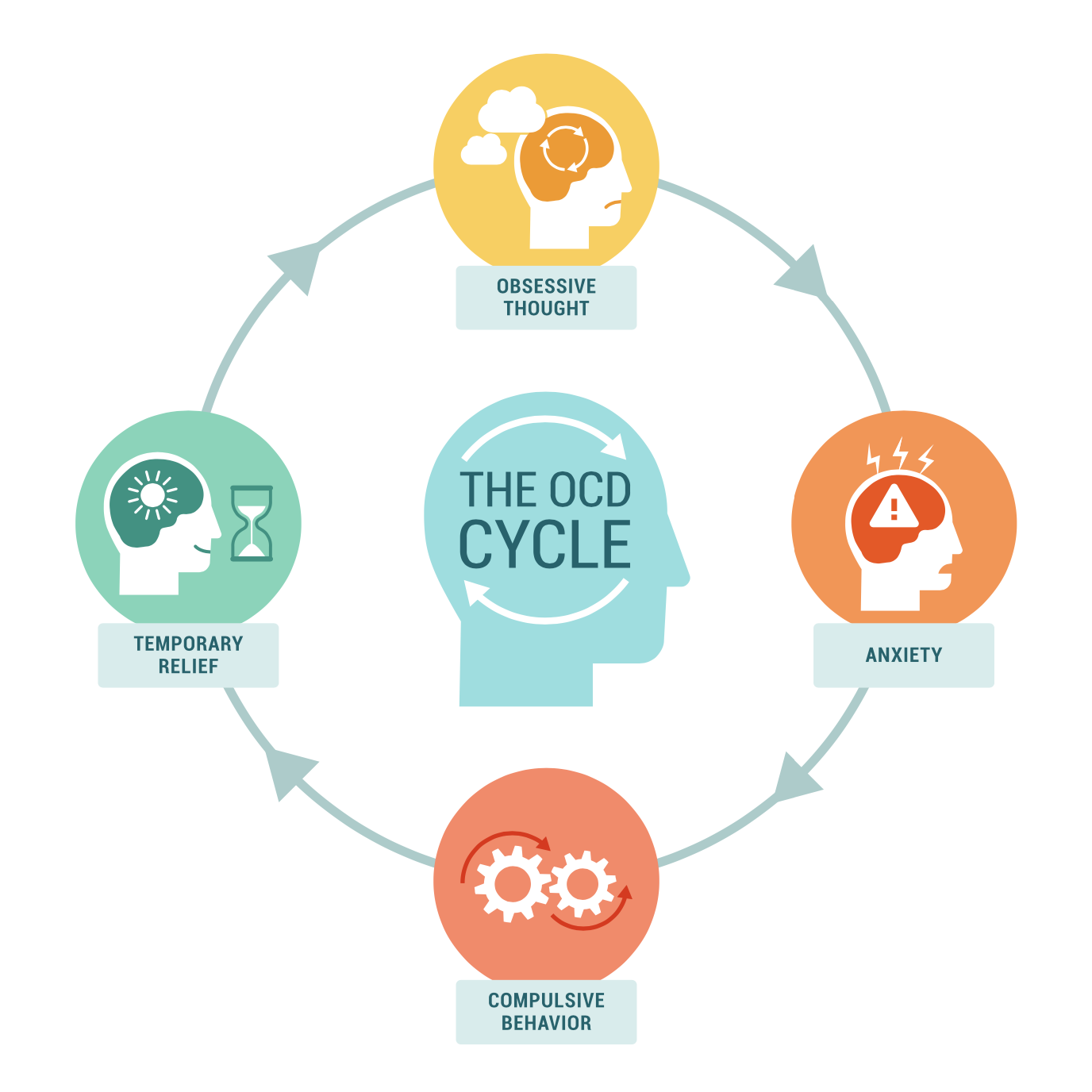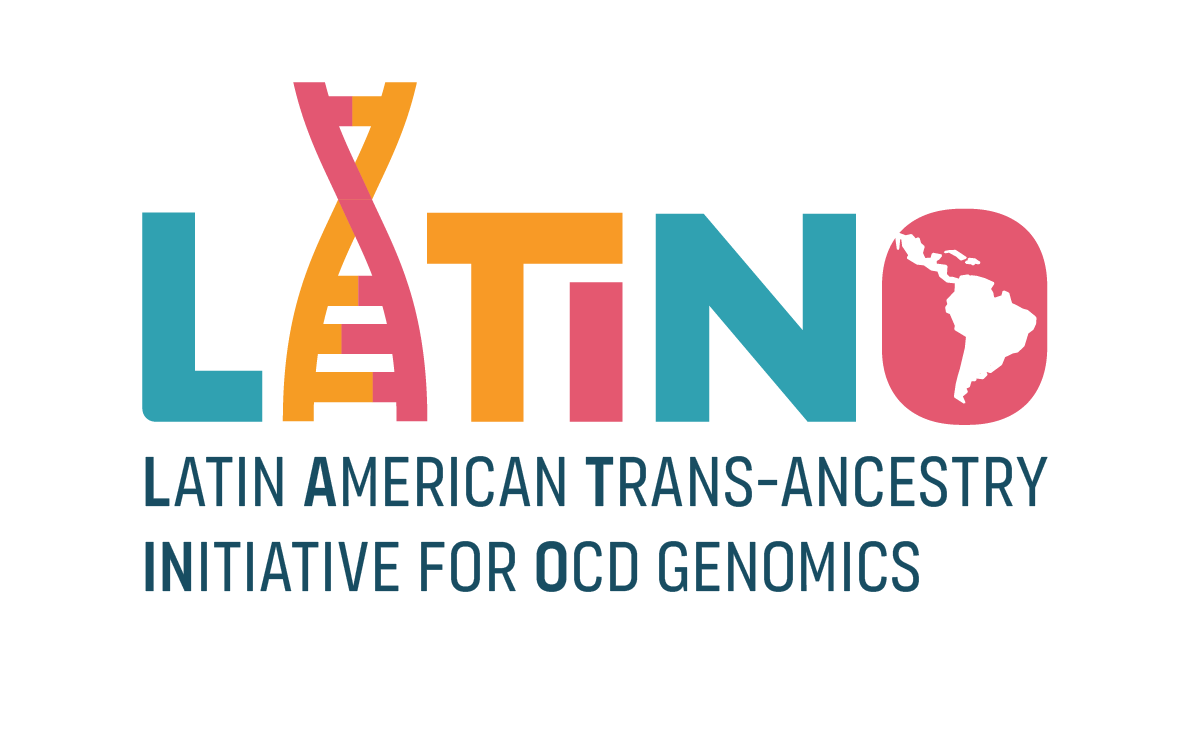
What is OCD?
Obsessive-Compulsive Disorder (OCD) is a mental health condition that is characterized by persistent intrusive thoughts, images or urges (obsessions) that lead to unwanted repetitive behaviors or mental rituals (compulsions). People with this condition experience an elevated sense of distress whenever they experience intrusive thoughts, images or urges, which trigger compulsive behaviors or avoidance to alleviate that distress. This becomes a vicious cycle, as the obsessions often become more frequent and severe when people engage in compulsions/avoidance.
While most people experience an occasional intrusive thought, image or urge, this is not OCD. Instead, a diagnosis of OCD requires the presence of obsessions and/or compulsions (almost always both, and almost always accompanied by intense distress) together with significant impairment in functioning. The obsessions and compulsions take a significant amount of time in a perso's life, causing difficulties in their relationships, work, and other important activities of daily living. If these symptoms sound familiar to you or your child, we invite you to take our survey here.
What exactly are obsessions?
Obsessions are recurring thoughts, images, or urges that are intrusive and cause distress. Individuals with OCD find their obsessions to be very distressing, and are often incompatible with a person's sense of self (ego-dystonic). People often recognize that their obsessions do not make sense, but nevertheless continue to recur. Common feelings that may arise with these intrusive thoughts can include fear, disgust, and an internal sense of “wrongness.” These obsessions can take multiple hours a day and impair a person's ability to interact with their friends, family, and environment in a meaningful way.
An important distinction to make is that between OCD and obsessive-compulsive personality disorder (OCPD). People with OCPD often have rigid control in their life, may be considered by others as perfectionistic, and can engage in rituals to maintain a sense of order. A main difference between OCD and OCPD is that individuals with OCPD do not find their thoughts or obsessions to be distressing. In fact, their rigid thinking and organized behavior will often align with their values and self-image (ego-syntonic), bringing a sense of comfort.
While in everyday life we may hear the phrase “obsession,” often used in a positive context related to being drawn to something (a movie, song, person, etc.), an “obsession” in OCD is unwanted, persistent, and accompanied by attempts to suppress or neutralize them. Further, while intrusive thoughts are commonly found in the population, they are fleeting and do not trigger an unreasonable level of anxiety that impairs daily functioning.
What are some categories and examples of common obsessions in OCD?
- Symmetry - preoccupation with orderliness, precision, evenness; numbers or colors
- Forbidden Thoughts - violent or sexual obsessions involving friends, family members, children; recurring images of genitalia
- Cleaning/Contamination - germs, bodily fluids, dirt, disease; getting a chronic physical illness
- Religious Obsessions - fear of offending or blaspheming against God, excessive concern with morality of actions
- Perfectionism - concern with a need to remember, know everything
- Loss of Control - fear of acting on an impulse, stealing on impulse, yelling expletives, impulsively harming others
- Identity - being uncertain about one's interests, gender, or sexual identity
- Harm - fear of something bad happening (e.g., end of the world, family member dying)
- Hoarding - inability to throw away things for their perceived value; fear of losing things
What exactly are compulsions?
Compulsions, the second component of OCD, are repetitive and purposeful behaviors or mental rituals that a person feels compelled to do as a way to relieve the distress associated with an obsession. The individual with OCD considers the compulsion as being able to eliminate or nullify the obsessions. This is essentially the maladaptive coping mechanism by which a person with OCD escapes their distressing, intrusive thoughts. Avoidance is another example of a compulsion, as a person attempts to evade or run away from the triggers of their obsessions. Like obsessions, compulsions are time-consuming, prevent healthy relationships, and interfere with daily functioning.
There are numerous repetitive behaviors most people engage in that are not considered compulsions. Most people have bedtime or morning routines that involve repeated actions, which are considered aspects of a healthy daily routine. The environment and context behind the action are important differentiators between compulsions and normative daily routines. A classic example is that of a librarian who arranges and organizes books all day. This would not be considered a compulsion, as such activity is an expected component of their job. Individuals with OCD feel the urge to engage in these behaviors to relieve their distress, but the activity is still ego-dystonic in that they would prefer not to engage in the behavior if they did not have to.
What are some categories and examples of common compulsions in OCD?
- Washing, Cleaning, Rearranging - excessive hand washing (sometimes over one hundred times per day), showering, grooming; cleaning household items; putting objects in order
- Checking - making sure nothing bad has happened to oneself or another person, making sure doors/windows are locked and stove knobs are turned off, making sure no mistakes are made
- Repeating - rereading, rewriting; walking over the same path in a particular way, repetitive body movements, performing tasks a certain number of times
- Mental Compulsions - counting, praying, “cancelling” or “undoing” a perceived wrong action, replaying scenarios in your head
- Avoidance - avoiding situations, objects, or people that relate to obsessions
